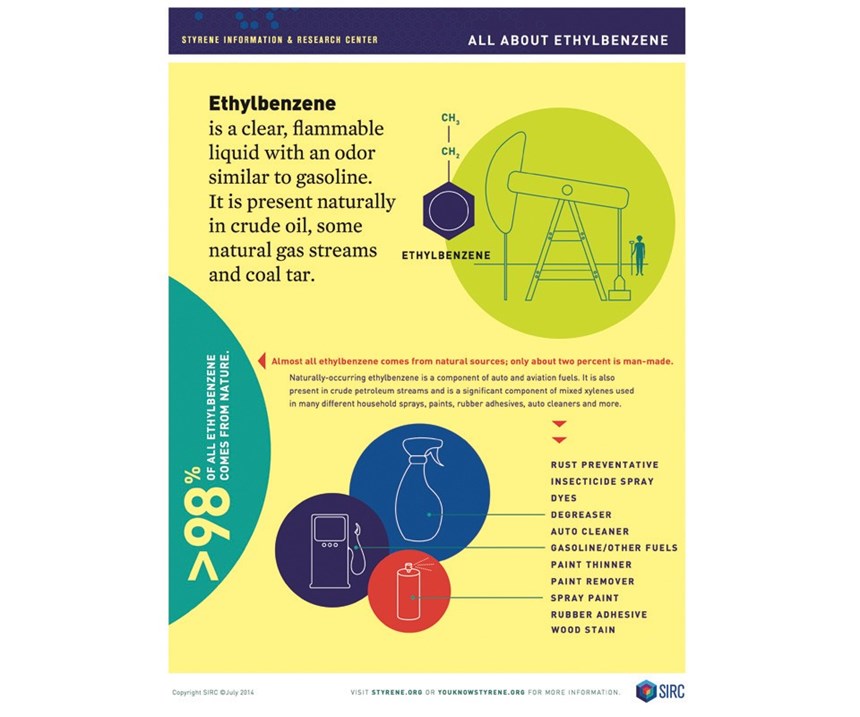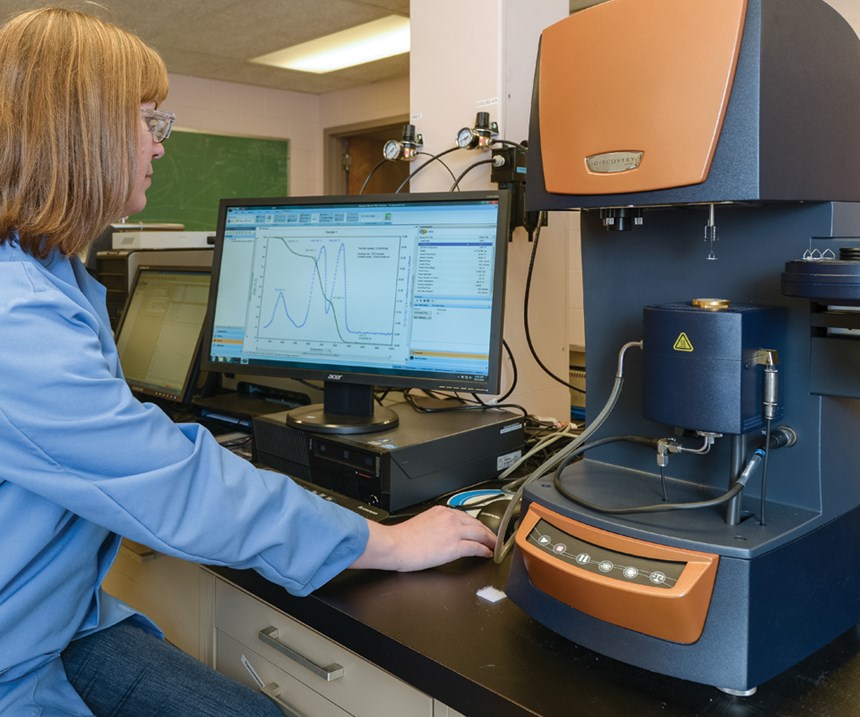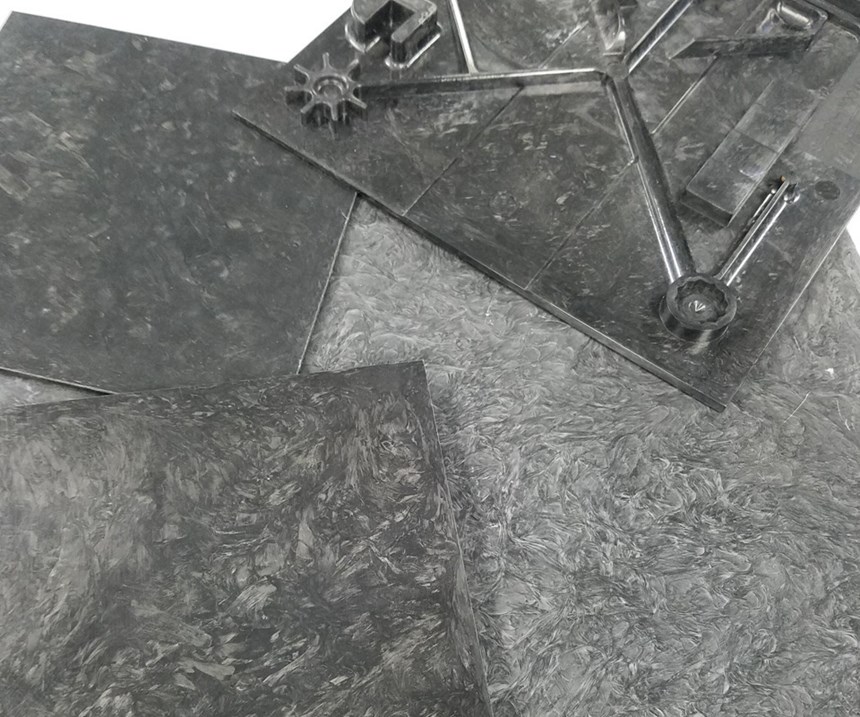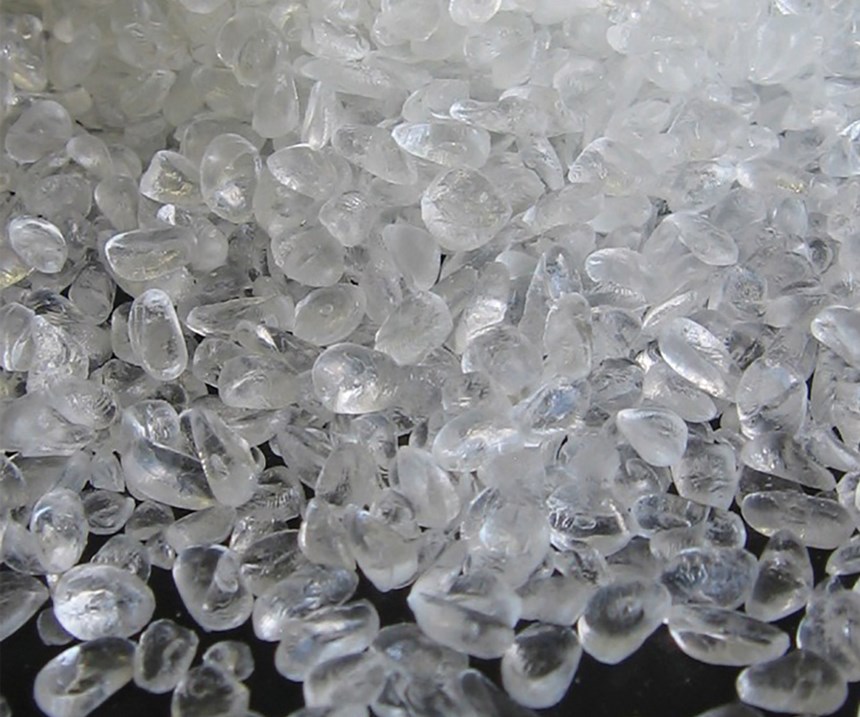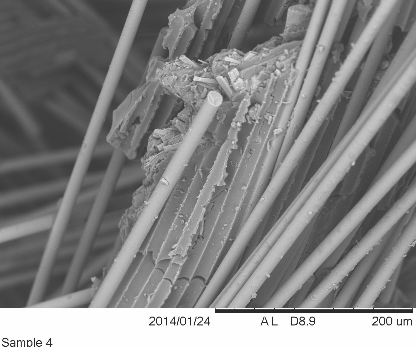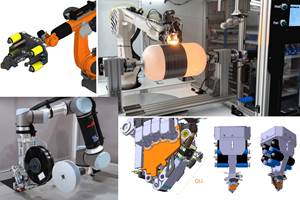Share
It’s been seven years since the US National Toxicology Program (NTP) listed styrene in its “12th Report on Carcinogens (RoC)” (Federal Register, June 2011) as “reasonably anticipated to be a human carcinogen.” What’s happened in the North American composites industry since that time? CW set out to answer that question. Since styrene was added to the NTP’s RoC, activity has progressed on two fronts. On the first, resin manufacturers have worked to replace styrene with alternatives that are less likely to pose regulatory challenges. On the second, composites industry lobbyists and scientists have advocated removal of styrene from the RoC — that is, they are pursuing elimination of the classification— arguing that styrene’s threat to human health has been overstated. To make an already complicated topic more complex, there are a variety of groups involved in this issue. These include regulators, such as the US Environmental Protection Agency (EPA) and various state authorities, as well as other governmental agencies that don’t regulate (such as NTP). There also are trade associations and nongovernmental organizations (NGOs), many of which are engaged in activities CW will cover here.
It’s important to emphasize that NTP is not a regulatory body, so it doesn’t set regulations. Rather, its charter is to provide information about potentially toxic chemicals to regulatory agencies and other health-related research groups. (This information could subsequently prompt regulatory agencies to consider limiting exposures or uses of a substance.) It’s also important to point out that NTP assessments are hazard assessments, not formal, quantitative assessments of risk. A hazard assessment differs from a risk assessment. Specifically, hazard refers to a substance’s potential to cause an adverse effect but does not consider the exposure level at which an effect might actually occur. “Risk” refers to the likelihood that harm will actually occur by looking at both potential hazard and actual exposure. This critical distinction often is the crux of the issue. Although globally, regulatory decisions are based on risk, in the US, various governmental regulatory and nonregulatory agencies and NGOs at both the federal and state levels use NTP’s hazard assessments as though they were risk assessments, which they are not.
Impacts on legislation
Are they right? Should styrene’s classification/status be changed? The answer is subject to scientific interpretation, and how those interpretations play out in the regulatory realm can have potentially significant economic impact — especially in some of the highest-volume segments of the plastics and composites industries.
Styrene is the subject of divided opinion. Its odor is unpleasant, and many health organizations recognize that chronic, unprotected exposure to relatively high levels of styrene can lead to health issues, ranging from headaches, fatigue/weakness, depression and respiratory and gastrointestinal irritation to hearing loss, kidney damage and even death at extremely high exposure levels (see the report on the hazards of styrene by the US Occupational Safety and Health Admin. [OSHA]). Critics, however, contend there is no solid evidence that properly protected workers in the manufacturing environment, let alone consumers in proximity to products made with styrene, will suffer harm from styrene exposure. Interestingly, styrene naturally occurs in a variety of common foodstuffs and in a major tree genus (see the Side Story “Styrene ≠ polystyrene: An important distinction for composites”).
A significant example of regulation with potential economic impact is a European Union (EU) legislative package passed in December 2006 that is beginning to phase in now. Designed to reduce exposure to many chemicals, including styrene, the Registration, Evaluation, Authorisation and Restriction of Chemicals (REACH) regulations are described by the European Chemicals agency as “improving human health and the environment from the risks posed by chemicals while enhancing the competitiveness of the European chemical industry.” Many composites supply-chain members with business in both the EU and North America are watching REACH carefully, unsure how it will affect their own businesses or that of their European customers.
“In the EU, styrene is classified as a developmental toxicant, and an occupational exposure limit of 20 ppm for an 8-hour average is recommended,” notes John Schweitzer, senior manager with the American Composites Manufacturers Assn. (ACMA, Arlington, VA, US). “The same data available to the EU was reviewed in 2006 by US regulators, who concluded that styrene presents ‘negligible concern for adverse developmental or reproductive effects.’ Accordingly, any impact of EU regulations on US manufacturers is not driven by regulatory or health concerns.”
In the US, the Styrene Information & Research Center (SIRC, Washington, DC, US) reports that legislation and regulation related to styrene and governing its manufacture, sale, transportation, use and disposal can and do vary between federal and state levels and from state-to-state. (A nonprofit organization with membership that comprises 95% of the North American styrene industry, SIRC describes itself as the leader in ongoing research, setting guidelines and advocating for science-based regulatory treatment of the chemical as necessary. SIRC says it has conducted more than US$20 million of research over the past 30 years to better understand styrene’s potential impact on both health and the environment.) Groups like ACMA and SIRC have established what they call common-sense guidelines for manufacturers about the types of protection workers should use, and have published information employers should consider when setting exposure limits and workplace practices for employees.
SIRC notes that styrene emissions are covered under the US Clean Air Amendments of 1990, which regulate air emissions of styrene and other substances classified as hazardous air pollutants (HAPs). Enforcement of these federal standards is done at the state level via issuance of operating permits to facilities that emit HAPs. Additionally, SIRC says nine states have established their own regulations for the chemical, using health-based emissions standards/guidelines, with a minimum of four of those states using “at least partially outdated information provided by the US EPA in the 1980s.”
Air-quality emissions limits can restrict manufacturers’ ability to expand production of products that, for example, use styrene in the manufacturing process. Since higher production levels can mean higher emissions of styrene, manufacturers must sometimes choose between trying to increase the emission limits in their air-quality permits, which can be time-consuming and costly, or switching to more-expensive, lower-emitting materials or processes. “Research compiled by SIRC continues to show that styrene is unlikely to cause cancer or any other serious health impact in humans if normal safeguards are followed,” adds ACMA’s Schweitzer. He notes that, in any case, growing businesses could find that they risk exceeding styrene or other VOC emission limits in their state operating permits, and then opt for increased use of lower-volatility resins. “However,” he contends, “this would be in response to regulatory and economic considerations and not health concerns.”
Some states also have enacted legislation that seeks to limit “chemicals of concern” based on lists developed by the US EPA, NTP, the EU or other authorities. SIRC notes that “styrene often is included in such lists but has not been identified, to date, as a candidate substance for further action by any US state that has developed a list of this type.” For example, in 2008, the Texas Commission on Environmental Quality (TCEQ) Review concluded that its existing “fence-line” exposure limit to styrene of 110 μg/m3 (based on odor detection) would be left as is. TCEQ reportedly conducted “a comprehensive review of scientific information related to styrene and styrene’s potential to impact human health” and concluded that “data are inadequate for an assessment of human carcinogenic potential.”
On the other hand, California passed a ballot initiative called the Safe Drinking Water and Toxic Enforcement Act of 1986, also known as Proposition (Prop.) 65, in November 1986. That law aims to protect the state’s drinking water from sources of chemical contamination “known to cause cancer, birth defects, or other reproductive harm” by maintaining and updating a list of chemicals “known in the state of California to cause cancer or reproductive toxicity” and also to provide warnings to consumers who may come into contact with products that contain the listed chemicals. The law requires manufacturers who use these chemicals to inform Californians about potential exposure risks. California EPA’s Office of Environmental Health Hazard Assessment (OEHHA) announced in February 2015 that it intended to add styrene to the Prop. 65 list of chemicals of concern, based on NTP’s classification of styrene in 2011.
Prop. 65 has different guidelines and requirements relating to different types of contact with chemicals such as styrene: for example, occupational (job-related) exposure, environmental releases to the state’s waters, and consumer exposures from use of finished products. If a consumer’s estimated average daily styrene exposure (over a lifetime of 70 years) from any consumer product containing styrene is below the 27-μg/day threshold, a warning label is not required; if exposures are higher, a warning label is required. Again, according to SIRC, OEHHA established a State Public Health Goal for styrene of 0.5 ppb in drinking water, yet at the end of the state’s own tests of 15,000 samples of drinking water, styrene was undetectable in all but a single sample.
“We maintain that the scientific basis that OEHHA used to set the very-low PHG for styrene ... is neither appropriate nor scientifically supportable ... because research available to OEHHA at the time it established the PHG indicates that finding of lung tumors in mice — but not in rats or humans — exposed to styrene is not relevant to human risk assessment,” explains Ray Ehrlich, SIRC executive director. “This view is similar to the conclusion reached by the EU and several other regulatory agencies.” (See “Styrene and Human Health” on the SIRC website.)
Two other organizations that potentially could impact perceptions about styrene’s potential health impacts include the American Conference of Governmental Industrial Hygienists (ACGIH, Cincinnati, OH, US) and the International Agency for Research on Cancer (IARC, Lyon, France), part of the World Health Organization (WHO). Earlier this year, an ACGIH committee announced it might recommend reducing its 8-hour exposure limits for styrene to 2 ppm; ACGIH has stated it will determine how to respond to its committee’s recommendation by year’s end.
ACGIH sets suggested workplace exposure limits, or threshold limit values (TLVs), for certain chemicals. The TLVs, along with other information, are intended to be used by industrial hygienists to guide worker-protection efforts. “If a state uses the proposed TLV guidelines when setting its own standards, then this could affect the industry,” says Fletcher Lindberg, marketing VP at resin manufacturer AOC LLC (Collierville, TN, US), as well as current chair of SIRC. “However, right now we don’t know what kind of impact the change might have, if any, or if the proposed reduction will be adopted by ACGIH.”
The ACGIH’s recommended limit on styrene isn’t binding, he notes, but it could eventually be used by insurance carriers when writing policies for manufacturers. “In the short term, it may have limited impact, although it does suggest that the trend will be toward more rules and regulation for styrene in the future,” Lindberg adds.
At its March 2018 Monograph meeting, IARC upgraded its classification of styrene from Group 2B (“possibly carcinogenic to humans”) to Group 2A (“probably carcinogenic to humans”). However, a full report on the IARC Monograph, which will include the panel’s rationale and decision to reclassify, will not be available until 2019. “[Like NTP], IARC classifications are based on hazard assessments, not risk assessments,” explains Ehrlich. “So, IARC classifications are not indicators of real-world potential risk. The mere presence of, or exposure to, a chemical is not an indication of risk or potential harm.” SIRC contends IARC’s upgraded classification is not supported by a complete review of the available science. “The safety profile for styrene has not changed,” Ehrlich adds. “IARC Monographs have limited utility for national regulators. However, some states do reference IARC classifications when making their own regulatory determinations.” Ehrlich says SIRC opposes any classification of styrene based on a hazard assessment only, rather than a quantitative risk assessment because hazard assessments are typically based on findings arising from extreme conditions that do not represent typical use or exposure and often are not based on the weight of the entire body of scientific evidence. Additionally, the use of hazard assessments only sets precedents that other groups may follow.”
Thermoset technology changes
Thermoset resin suppliers and compounders who work with vinyl ester (VE) and unsaturated polyester (UP) have not waited for additional styrene regulations, but have instead prepared for them by introducing alternative diluents, changing compounding methods, or entirely reformulating resin systems as not only styrene-free but also low-VOC/low-odor.
“We’re doing a significant amount of work to address a variety of customer needs in different markets,” notes Laura Gigas, senior product manager – transportation at Ashland LLC (Dublin, OH, US). “For example, we’ve developed styrene-free versions of our products for every market, using alternative monomers or even [styrene-] monomer-free versions of products. [Styrene-] monomer-free products for prepreggers or SMC compounders would entail switching from solvent-based compounding to hot-melt systems.”
She acknowledges that not everyone has the equipment necessary to use those types of products, so another approach Ashland has taken is to use a combination of proprietary technologies to drive the conversion of styrene during resin crosslinking to higher levels (as measured by differential scanning calorimetry), leaving less unreacted styrene and hence reducing VOCs. “In SMC, we now have grades where we can drive cure from a typical 95% to a higher level of 99.7%,” Gigas adds. “Interestingly, we see slightly better mechanicals with these alternative-monomer products vs. those using styrene, but they’re still close to our conventional grades. And because styrene is cost-effective, and a very effective reactive diluent, a third approach we’ve taken is to develop lower-VOC, lower-odor versions that replace a portion of the styrene with alternative diluents of lower volatility. We’ve found we can retain 20-30% styrene but reduce volatiles from 3,000-5,000μg/bag to 10-50. That minimizes impact on the customer, and those products perform just as well as styrenated versions — regardless of whether you’re using open-mold, pultrusion or compression molding.”
“Polynt-Reichhold has been a leader in reducing VOC and styrene content for over 20 years,” explains Steve Voeks, North American R&D director, Polynt-Reichhold Group (Carpentersville, IL, US). He cites the low-styrene/low-VOC gel coats and UP resins the group commercialized in the 1990s prior to the activation of Maximum Achievable Control Technology (MACT) standards codified in Title III of the 1990 Clean Air Act Amendments. He also points to the group’s work developing and promoting low-cost, closed-mold technologies with inherently lower emissions, plus development of numerous technologies to remove all styrene and, in some cases, most VOCs in advance of regulatory requirements. “We have a strong, market-facing strategy to address customer needs for the foreseeable future — even in the face of more stringent styrene regulation,” Voeks adds. “Using a combination of strategies and working closely with trade associations and regulatory officials, we’ve arrived at achievable goals for gel coats as well as resins and we continue to develop new chemistry and other technologies that will provide further reductions.” Depending on the market and its requirements, the group has either reformulated existing resins by replacing some or all of the styrene with alternative reactive diluents, or has developed new diluent-free resins with low odor under the Polylite HS tradename.
“Our early products with reduced styrene or alternative monomers were less user-friendly and offered lower performance vs. high-styrene formulations,” he notes. “However, over the last 10 years, we’ve designed new polymers and formulations that overcame these issues. As it stands today, we have a broad range of MACT-compliant products meeting the requirements of composites applications. Our products are being used in industries ranging from automotive interiors to cured-in-place pipe for residential neighborhoods.” Voeks says the group’s R&D team will continue working closely with customers to understand their needs, to reduce or eliminate styrene and to develop technical solutions based on cost vs. performance metrics. He adds that managing the supply chain for alternative monomers is critical for security of supply and cost.
Doug Gries, market development director – Engineered Composites & USCAN at A. Schulman Inc. (now LyondellBasell, Fairlawn, OH, US), says the company has received specific requests from automotive and aerospace customers — especially those in the EU — to develop high-performance products with low outgassing, reduced VOCs and low odor. “In response to changing customer and market demands, A. Schulman has recently launched its Quantum LYTEX SF line of styrene-free, epoxy-based SMC,” adds Gries. “Anticipating further changes in the market, we’re planning to launch a global initiative to develop and commercialize an entirely styrene-free portfolio comprising standard products and custom formulations to meet evolving application needs for lower styrene and other VOCs. Plus, we also plan to offer a range of low-styrene formulations with lower VOCs. We pride ourselves on our innovation and willingness to listen to what customers and markets are telling us. We’re committed to working with our supply base on raw materials that help move the industry in a desirable direction.”
“Styrene is a major commodity chemical and, as a raw material, it is very important to the composites industry, although its use in composites is, overall, a very-small part of the overall styrene market,” explains AOC’s Lindberg. “Industry has used styrenated composites for decades and styrene has been heavily studied in terms of its overall health effects. It’s noteworthy that many of these studies are relatively positive toward styrene.”
He notes that so far, the EU and Prop. 65 regs haven’t caused significant changes in how AOC goes to market, but if future regulations require different formulations, then the company will be ready. “Almost 20 years ago, when the potential for increased styrene regulation became a real possibility, AOC developed styrene-free analogues for our entire product line using different reactive diluents and alternative raw materials ingredients,” Lindberg explains. “We did this for contingency purposes and because many customers wanted to test these alternative products for efficacy. In most cases, they found performance was comparable with current styrenated products, although they were more expensive.” He adds that these alternative formulations are currently available for customers who wish to purchase them and could be produced in significant quantities should styrene regulations tighten in the future. Lindberg also notes that two considerations currently cause the most requests for lower-styrene products. “Many of our clients have permits for emissions, so if business is good and it looks like they’ll exceed their production limits, which would put them out of compliance, then they’ll often purchase products with less styrene,” he adds. “Also, in the case of cured-in-place pipe for sewer rehabilitation, we’ve seen increases in the number of installations that use styrene-free resins, which is typically the result of specification preferences by some engineers at various municipalities and engineering firms.”
Thermoplastic technology changes
Restricting or eliminating styrene monomer would not just affect thermosets, but also many thermoplastic resins and compounds, so what is that side of the industry doing about the situation?
“I don’t expect that styrenic resins will be phased out completely in the near future,” states Patrick Muezers, managing director, Polyscope Polymers BV (Geleen, The Netherlands). “Concerns about styrene will most likely lead to requirements for lower VOC levels in resins and compounds, which already is the case in the automotive industry. Products with lower VOCs are seen as higher-value products. At Polyscope, we’ve already introduced XIRAN IZ, a heat-boosting additive for ABS [acrylonitrile butadiene styrene] and ASA [acrylonitrile styrene acrylate] resins with lower VOC levels than alternatives and with similar or better performance. We will continuously support the industry by developing innovative solutions, such as products with lower VOCs.”
“We’re putting more low-VOC materials into our product line, and new business is already coming from these grades — especially in the EU automotive market,” notes Brian Grosser, VP – North American Automotive for LOTTE Advanced Materials Inc. (Seoul, South Korea). He notes they’ve had to change some ingredients to comply with EU REACH requirements. He also says that most automakers already include lower VOCs in their specs for interior trim parts. “Of course, they want these improved materials at the same or lower cost than their predecessors,” he quips.
He too believes that styrenic resins won’t be phased out as long as industry needs aesthetic surfaces achieved via secondary operations like painting and plating. “Also, in many cases the physical properties of styrenic polymers are superior to those of other [thermoplastic] resin families.” He acknowledges that materials selection will change on an application-by-application basis and will follow technology improvements in the industry. “We will keep providing innovative materials solutions for the automotive industry,” he adds.
Reinforcement technology changes
Interestingly, work by thermoset and thermoplastic resin suppliers to reduce or remove styrene from their polymers has impacted fiberglass suppliers, too. “Over the last decade, we’ve significantly reduced VOCs and styrene in our facilities and all our sizings have been styrene-free for the past seven years,” reports Anne Berthereau, VP, innovations, Composite Solutions Business at Owens Corning Co. (Toledo, OH, US). She says the company has made significant investments to commercialize products that are formaldehyde-free as well as styrene-free. “As news of new domestic regulations continue to pulse, we’ve intensified our innovation efforts to deliver optimal efficiency and performance in low-VOC and styrene-free resins,” she adds. “Creating solutions that grow our customers’ business is always top-of-mind for Owens Corning and doing so in a way that positively impacts the communities in which we live and the world around us is paramount.”
What’s next?
For now, it’s a wait-and-see game. Will styrene regulations tighten or stay as they are? “At the end of the day,” AOC’s Lindberg sums up, “styrene is a pretty important component for making composites work well. It’s a relatively low-cost ingredient that is also a very effective reactive diluent. As a raw material ingredient, styrene does its job well and replacing it altogether will be very disruptive for the marketplace. Nonetheless, if regulations or customer preferences change, we’ll comply with all requirements and make sure our products meet or exceed customer expectations.”
Related Content
The next evolution in AFP
Automated fiber placement develops into more compact, flexible, modular and digitized systems with multi-material and process capabilities.
Read MoreComposites manufacturing for general aviation aircraft
General aviation, certified and experimental, has increasingly embraced composites over the decades, a path further driven by leveraged innovation in materials and processes and the evolving AAM market.
Read MoreComposites end markets: Electronics (2024)
Increasingly, prototype and production-ready smart devices featuring thermoplastic composite cases and other components provide lightweight, optimized sustainable alternatives to metal.
Read MoreLife cycle assessment in the composites industry
As companies strive to meet zero-emissions goals, evaluating a product’s carbon footprint is vital. Life cycle assessment (LCA) is one tool composites industry OEMs and Tier suppliers are using to move toward sustainability targets.
Read MoreRead Next
All-recycled, needle-punched nonwoven CFRP slashes carbon footprint of Formula 2 seat
Dallara and Tenowo collaborate to produce a race-ready Formula 2 seat using recycled carbon fiber, reducing CO2 emissions by 97.5% compared to virgin materials.
Read MoreDeveloping bonded composite repair for ships, offshore units
Bureau Veritas and industry partners issue guidelines and pave the way for certification via StrengthBond Offshore project.
Read MorePlant tour: Daher Shap’in TechCenter and composites production plant, Saint-Aignan-de-Grandlieu, France
Co-located R&D and production advance OOA thermosets, thermoplastics, welding, recycling and digital technologies for faster processing and certification of lighter, more sustainable composites.
Read More

.jpg;width=70;height=70;mode=crop)

